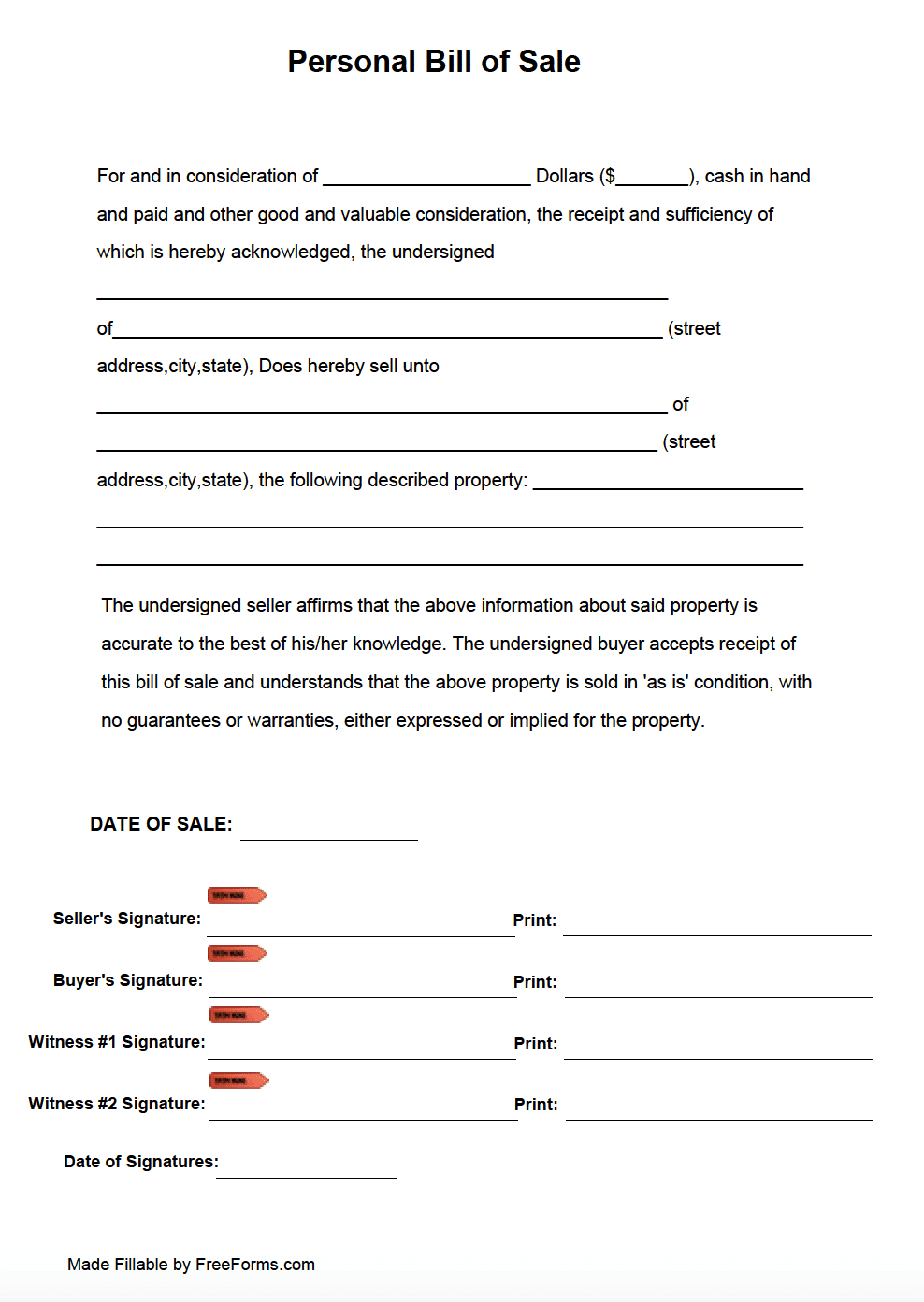A Personal bill of sale Form incorporates an authorized legal written document as evidentiary proof of the transfer of an item of personal property for a specified monetary value. The paperwork consists of informative data on those involved in the transaction, the object being transferred, the purchase price, and affirming endorsements upon agreement and sale. The form details the exchange, confirming the current condition of the item per the “as is” clause in the contract.
Do I Need a Bill of Sale?
The first determining factor as to whether a bill of sale is necessary for your situation is the value of the item you will be selling or buying. If the piece of property being exchanged is worth a large sum of money, it is a secure investment to take the time to complete a bill of sale form to provide for both individuals once the transaction has culminated. In the case that the property being purchased is for a value of less than $100 or so, it may not be required but can still be prepared and executed for peace of mind, should you chose to record the event.
When to Incorporate a Bill of Sale Into the Transaction
When selling an expensive piece of personal property, it is wise to supply some documenting instrument to provide proof of the transfer. Employing the use of a bill of sale can be beneficial for both the buyer and seller. The seller will be protected from any liability issues associated with potential use or operation of the property after transferal of ownership. The buyer can also feel secure knowing an executed Bill of Sale will supply proof of ownership should it ever come into question. Keep in mind that many high dollar amount purchases such as a motorized vehicle, boat, aircraft, trailer or farm equipment may require a bill of sale when it comes time to transfer title or register in most states. It is always a good idea to contact your local government agency to inquire if you are unsure of the state laws affecting the sale. Lastly, a Bill of Sale will also equip both parties involved with sufficient documentation to utilize for taxation purposes should you or your accountant choose to evaluate the purchase come tax time.
How to Complete the Bill of Sale Form
Step 1 – Download the Adobe PDF and open the file.
Step 2 – Sale Price Information – Indicate the dollar amount in which the property will be exchanged as follows:
- Dollar Amount in Words
- Dollar Amount in Numbers
Step 3 – Seller Information – You will then want to include the required information associated with the seller in the property:
- Seller’s Name
- Seller’s Address
Step 4 – Buyer Information – Enter the applicable information requested on the seller as follows:
- Buyer’s Name
- Buyer’s Address
Step 5 – Purchase Property Description: Include a detailed account of the purchased item in its current condition, making sure to refer to any serial number or identifying specifics.
Step 6 – Upon fulfillment of the transaction, provide endorsements, printed names, and date of sale in the following order:
- Date of Sale
- Seller’s Signature
- Seller’s Printed Name
- Buyer’s Signature
- Buyer’s Printed Name
- Witness #1 Signature
- Witness #1 Printed Name
- Witness #2 Signature
- Witness #2 Printed Name
- Date of Signatures



0 comments
Comments are closed.